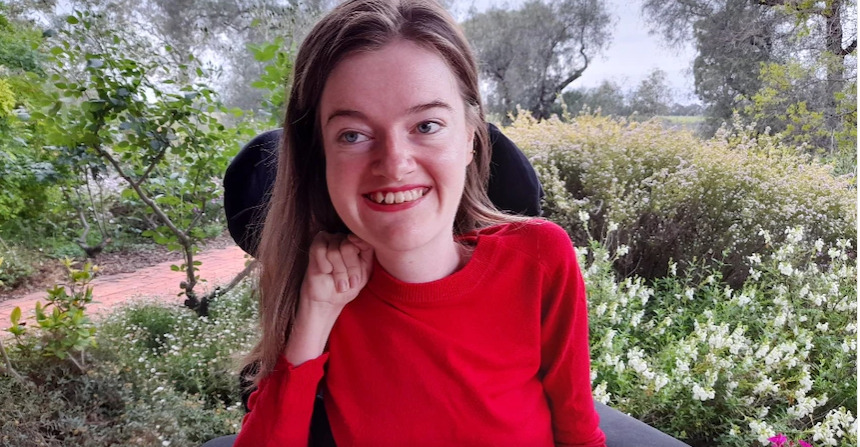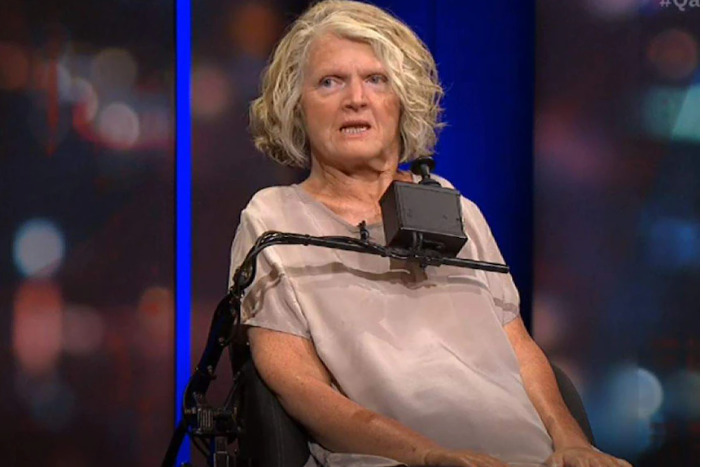COVID ‘Freedom Day’ is a terrifying prospect for some people. I am one of them.

I recently received a text from a friend asking: “Are you excited for freedom?” A beat skipped before I replied — I struggled to find the words to say.
To be honest, I am terrified.
For some, the reopening roadmap is exciting — it means picnics, open dance floors, a return to a sense of normality.
But for others it can muster a sense of fear and countless lingering questions, like “How will COVID-19 affect me?”
Everyone has felt the weight of this pandemic.
We’ve been estranged from friends and family, lost work, worked from home, have played parent and teacher, our healthcare system has been pushed to the limits — the list goes on.
I understand why we need to reopen.
I’m just as excited as the next person to leave my house, to book a table at my favourite restaurant or even have that first awkward in-person interaction (how to act around other people again?).
That first taste of freedom will be sweet. But right now, I’m worried about what “living with COVID-19” actually means.
At 18 months old I was diagnosed with spinal muscular atrophy type 2, a condition where your skeletal and respiratory muscles weaken over time.
According to the literature, I have an “increased risk of manifesting severe symptoms of COVID-19.”
I’ve been put into ICU over a seasonal flu.
I am by no means the only one with this fear.
A friend of mine is receiving chemotherapy for the next 12 weeks.
They said they had “mixed feelings about coming out of lockdown”.
She said that her “immune system is shot” due to her cancer treatment and multiple sclerosis.
That means she “can’t afford to catch any bugs”.
When Kurnai/Gunai, Gunditjmara, Wiradjuri and Yorta Yorta writer Nayuka Gorrie posted on Twitter that they felt scared about things opening up, their sentiments were seconded by a range of people.

“I have immunocompromised toddlers who are right now too young to get the vaccine,” they wrote.
This was echoed by those with compromised immune systems, family members.
One person in the comments section asked: “I’m a primary school teacher and will be with 600 unvaxxed students. My husband has MND. I’m feeling scared too. Should I go or take leave?”
Epidemiologist Mary-Louise McLaws told Guardian Australia that she was worried about how the new roadmap would impact the most vulnerable, including those who are immunocompromised and those who the vaccines are not as effective for or can’t get vaccinated for medical reasons.
“We know there is vaccine inequity,” she said.
“There seems to be this idea that NSW is homogenous, but it’s not.
“The young, the vulnerable and immunocompromised, and the culturally diverse may not yet be quite fully vaccinated yet at the same rates.”
Last week, NSW became the first Australian state to fully vaccinate 70 per cent of its eligible population against COVID-19 and we’re on track to reaching 80 per cent to open up, with a light layer of public health measures.
It’s exciting, but this rush to open has some politicians and commentators saying that people’s deaths – including, possibly, my own possible death – is a loss “we have to live with”.
I’m fortunate to have been able to access two doses of the Pfizer vaccine, but so many others in our community who are most at risk have not.
Our leaders need to be transparent about the implications of opening up and what living with COVID-19 really means.
When politicians speak of “Freedom Day” and living with coronavirus, I think they also need to qualify what living with the virus actually means so the community can really understand what the cost is.
Today we’re lowering our defences and entering a world that presents a greater risk for people who were considered part of the initial priority group to vaccinate.
The reporting of coronavirus deaths followed by the phrase “underlying medical condition” can make those lives feel expendable.
We are excused as the lost causes who were probably going to die soon anyway.
It’s like what Rosemary Kayess, the associate director of the University of NSW’s Disability Innovation Institute said on Q+A in September last year when she spoke about how in some countries people with disability were considered “collateral damage”.

When it came to the decision of who received critical care, she said it left her feeling “dispensable … that she was not one of the real people”.
Most recently the Disability Royal Commission laid out its concerns in a report.
I can’t help but feel the same and I’m worried that we’re not being listened to.
I am one of the many people in our country who make up priority groups but are left out of the conversation.
In some ways, I’m just as excited as the next person to reopen and have a sense of normality again.
We have all been doing what we can to survive lockdown, holding tightly onto those dreams we all have.
But, for some of us, it might be longer before we can experience them.
This article was written by MDNSW member and writer fro ABC Western Plains, Kate Thomas. View the article here.
